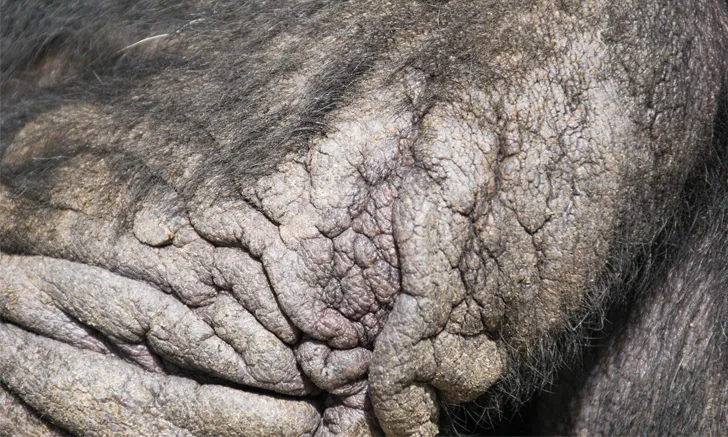Malassezia pachydermatis
William Oldenhoff, DVM, DACVD, Animal Dermatology Center, Studio City, California

Malassezia pachydermatis infection is frequently undiagnosed, as making a diagnosis is often difficult when clinical signs overlap a number of other clinical conditions (eg, atopic dermatitis, seborrhea). In addition, there are no consistently effective quantitative cytology techniques.
Response-to-treatment trials are an important component in diagnosing Malassezia spp dermatitis.1,2 Treatment should be considered when yeast has been identified on cytology in a patient showing clinical signs compatible with Malassezia spp dermatitis. Recurrent M pachydermatis overgrowth is common and often secondary to underlying conditions (eg, allergies, seborrhea, endocrinopathies, skinfolds).
In addition to acute management of infection, treatment success relies on appropriate diagnosis and management of predisposing conditions.
SYSTEMIC THERAPY
Ketoconazole
Dogs: 5-10 mg/kg PO once a day for 2-4 weeks1-3
Cats: Not recommended because of high incidence of side effects1,2
Ketoconazole, an imidazole antifungal, impairs ergosterol synthesis in fungal cell walls by inhibiting cytochrome P450 14 a-demethylase (CYP51). Ketoconazole has efficacy against a wide range of fungal organisms and has been shown to have anti-inflammatory effects.4
Most commonly used systemic treatment for dermatitis caused by M pachydermatis in dogs4
Itraconazole
Dogs: Daily treatment, 5-10 mg/kg PO once a day for 2-4 weeks1-3; pulse treatment, 5-10 mg/kg PO for the first 2 days of each week2,5
Cats: 5-10 mg/kg PO once a day for 2-4 weeks1,2
Itraconazole, a triazole antifungal, inhibits CYP51, resulting in impaired ergosterol synthesis in fungal cell walls.1,2,5 Itraconazole is lipophilic and highly protein-bound, and therapeutic levels persist in the skin days to weeks after treatment is stopped.1,2,5 This principle likely explains why pulse treatment appears to be effective.5
Fluconazole
Dogs: 5-10 mg/kg PO once a day for 2-4 weeks1,2,6,7
Cats: Fluconazole treatment of M pachydermatis infections in cats has not been studied.
Like itraconazole, fluconazole is a triazole antifungal that impairs ergosterol synthesis in fungal cell walls via inhibition of CYP51.1,2,6,7 Fluconazole is comparable in efficacy to ketoconazole in treating Malassezia spp dermatitis in dogs.6
Terbinafine
Dogs: 30 mg/kg PO once a day8,9 or 30 mg/kg PO for 2 consecutive days each week for 3-4 weeks10
Cats: Terbinafine treatment of M pachydermatis infections in cats has not been studied.
Terbinafine, an allylamine antifungal drug, inhibits ergosterol synthesis and squalene epoxidase, resulting in ergosterol deficiency and squalene accumulation in fungal cell walls. It does not inhibit cytochrome P450 enzymes. Although terbinafine has been shown to reduce M pachydermatis populations and dermatitis in dogs treated for 3 weeks, longer durations of therapy or adjunctive use of topical agents may be necessary to achieve resolution.8,9,10
Griseofulvin
Dogs, cats: Not recommended for use in dogs or cats1,2
Griseofulvin inhibits cell mitosis and nucleic acid synthesis in fungal organisms by interfering with spindle microtubules. However, this agent is not effective in treating Malassezia spp dermatitis in dogs or cats.
Although many topical products are available for treating Malassezia spp dermatitis, only a few controlled studies have documented efficacy.3,11
TOPICAL THERAPY
Antifungal Shampoos
Dogs, cats: Some topical products supported by clinical evidence3,11
Strong evidence supports twice-weekly use of 2% miconazole + 2% chlorhexidine shampoo.3
For both dogs and cats, including puppies and kittens
Once- or twice-daily application of 0.3% chlorhexidine + 0.5% climbazole and Tris-EDTA wipe has been shown to reduce M pachydermatis populations in naturally infected dogs.11
For dogs only
May also be effective in dogs with localized overgrowth of M pachydermatis
Antifungal shampoos can be an important component in treating Malassezia spp dermatitis. For mild-to-moderate or localized infections, they may be the sole therapy. For generalized or severe infections, topical therapy should be combined with systemic therapy.
Although many topical products are available for treating Malassezia spp dermatitis, only a few controlled studies have documented efficacy.3,11
Further studies are needed to evaluate other topical products.
CYP51 = cytochrome P450 14 a-demethylase